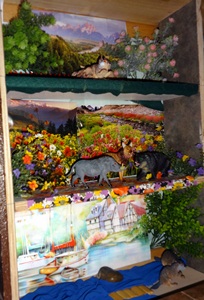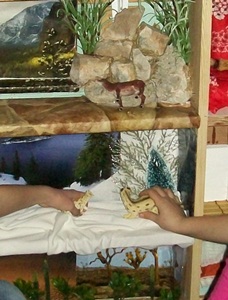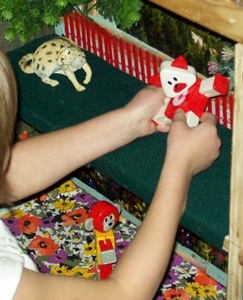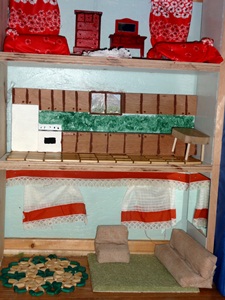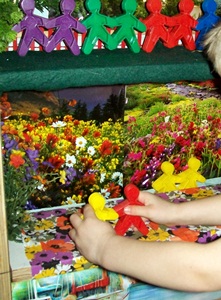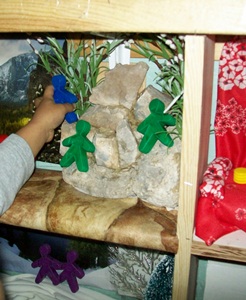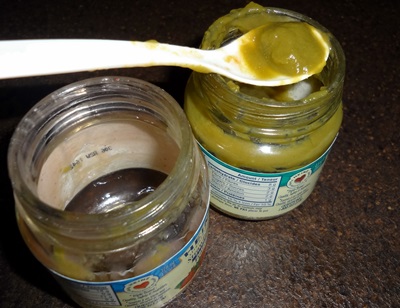I had promised to write another post to provide more detail about these shelves and how the children used them. This is that post. Part of the reason it took this long for me to write it was because the children were not using the shelves.
I’ll admit that I was a little shocked and dismayed. When I was a child, I would have played there all day. Even as an adult I wanted to. I don’t usually ‘demonstrate’ play activities for the children. I prefer to follow their lead but none of the children played here at all during the first month.
I was concerned that maybe they considered the shelves to be a decorative display instead of a play area. I had purposely not put any toys on the shelves assuming that the children would bring toys to the area and as the toys available in the playroom changed so their play would change too.
Nothing was happening so I started ‘staging’ the area with toys each day before the children arrived.
The Mountain, Winter Scene and Desert;
The Forest, the Garden, and the Beach;
Interestingly, when the children arrived I overheard comments like “Cheryl, forgot to put her toys away”. They would then clean up for me. Thanks?
Slowly the children began to play here for brief periods.
Occasionally they’d bring toys over from other areas;
I figured The Bedroom, Kitchen and Living Room shelves were familiar enough that the children would recognize these as a ‘doll house’.
One day some bugs moved in;
I thought maybe ‘people’ toys would entice the children to play here more. I brought the puzzle people out of storage and into the playroom – they proved to be somewhat more popular than the animals;
Still, this play area is not used as often as I had expected. The high-energy children never play here – that doesn’t surprise me. There are a few children who will play here independently if they want ‘alone time’ – they’ll get annoyed if others try to join – I get that too. Sometimes two or three will agree to play together but even then the shelves are mainly a place to just ‘visit’ briefly during an activity that is based elsewhere in the room.
On further reflection I think the natural lighting in this area is a big factor. This area tends to be poorly lit early in the morning and later in the afternoon – the two times of the day that the children are most likely to play here.
Huh. Not what I was expecting.


